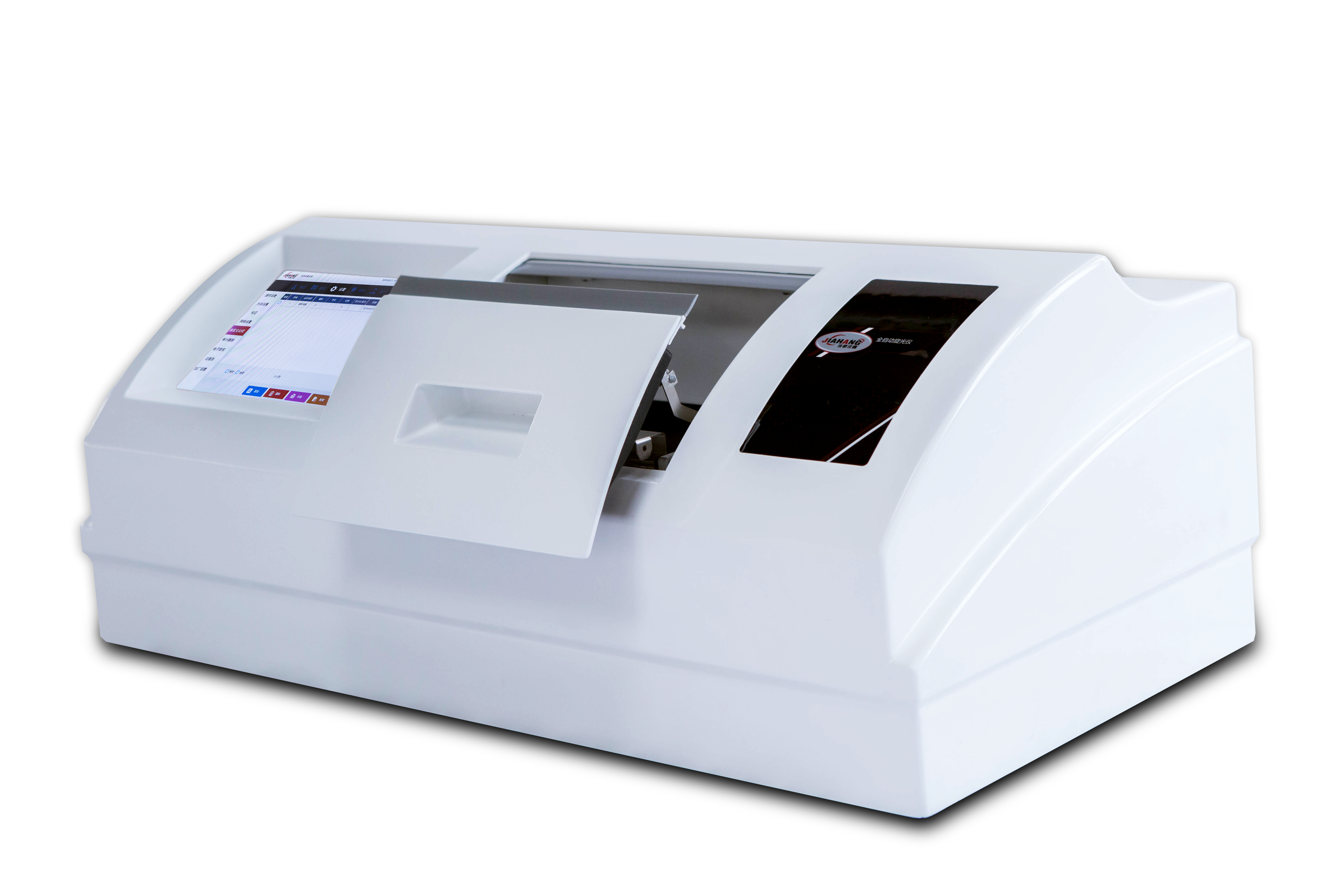March 14, 2025
Tag:
1. Preface
Ursodeoxycholic acid (URsodeoxycholic acid), as the main effective component of the precious Chinese medicine bear bile, has a remarkable effect in the clinical treatment of various diseases of gallbladder and digestive tract. With the decrease of natural bear bile resources, synthetic and semi-synthetic ursodeoxycholic acid have become the focus of urgent research. This project aims to use Digipol-P630 automatic digital politrometer of Shanghai Jiahang to accurately measure the specific rotation of ursodeoxycholic acid synthesized from different raw materials, help researchers to screen out better synthetic raw materials, and provide data support for the industrial production of ursodeoxycholic acid.
2. Experiment preparation
2.1 Test equipment

1> Digipol-P630 automatic digital politrometer
2> Temperature controlled test tube (suitable for Digipol-P630)
3> Precision balance (accuracy up to 1/1000)
4>100mL volumetric bottle.
Digipol-P630 automatic digital politer has the ability of high precision optical rotation detection, and can measure the sample optical rotation quickly and accurately. Precision balance can ensure the accuracy of the sample quality; The 100mL volumetric bottle is used for the precise preparation of sample solutions.
2.2 Experimental reagents
Ursodeoxycholic acid (URsodeoxycholic acid) obtained from natural bear bile was used as the control standard.
Ursodeoxycholic acid (URsodeoxycholic acid) synthesized from chicken gall was studied.
Ursodeoxycholic acid (ursodeoxycholic acid) was synthesized from cow gall and sheep gall.
Anhydrous ethanol, as a solvent for the sample.
3. Experimental steps
3.1 Sample Test
Use a precision balance to accurately weigh the 6.000g sample. Add a small amount of anhydrous ethanol to the sample, stir it thoroughly to dissolve it, and then carefully transfer the dissolved solution into a 100mL volumetric bottle. Then flush the dissolved sample container with anhydrous ethanol for several times, pour the rinsing solution together into the volumetric bottle, and finally add anhydrous ethanol to the volumetric bottle line, gently shake well, and prepare a sample solution with a concentration of 6g/100ml for use.
Connect the Digipol-P630 automatic digital optical polator power source, turn on the instrument, preheat for 10-15 minutes to ensure that the instrument reaches a stable working state.
On the instrument operating interface, set the test mode to the specific curl mode, set the concentration parameter to 6g/100ml according to the sample solution concentration, and set the tube length to 100mm (if the length of the temperature controlled tube used is fixed to 100mm, this step can be omitted the confirmation operation).
Absorb anhydrous ethanol with a syringe and slowly inject into a temperature-controlled test tube until full. Carefully place the temperature control test tube filled with anhydrous ethanol into the sample room of the instrument, and click the "Clear" button on the instrument operation interface to eliminate the influence of ethanol solvent on the measurement results and ensure the accuracy of subsequent measurements.
Remove the temperature-controlled tube and drain the anhydrous ethanol from it. Wash the test tube with the prepared sample solution 2-3 times to ensure that the residual solvent on the inside of the test tube is completely replaced. Then, use a syringe to absorb an appropriate amount of sample solution into a temperature-controlled test tube to ensure that there are no bubbles in the solution.
Put the temperature control test tube back into the sample room, and insert the matching temperature probe into the constant temperature test tube. On the operating interface of the instrument, set the control temperature to 20℃, open the temperature control button, and start the temperature control function. When the sample temperature is stable at 20℃, click the "Test" button, the instrument will automatically measure and display the specific rotation value of the sample.
3.2 Sample calculation
The formula is used for calculation. Where, α represents the rotatory power, which is directly measured by Digipol-P630 automatic digital poltometer; [a]D20 is the specific rotatory constant; c represents the mass concentration, which in this experiment is 0.06g/ml (6g/100ml); L is the length of the polarimeter, which is 1dm (100mm converted). Through this formula, the specific rotatory power of different samples can be accurately calculated.
4. Results and discussion
4.1 Test Interface
The Digipol-P630 automatic digital politroscope has a simple and intuitive operation interface, and can display measurement parameters in real time during the test, such as concentration, tube length, measurement times, measurement mode (specific rotation mode), etc. At the same time, it can also display the measurement progress and real-time measurement results. After the measurement is complete, you can directly view the final specific rotation value on the interface, and you can choose to save the data to the internal storage of the instrument or export it to an external storage device for subsequent analysis and processing.
4.2 Experimental Results
| Products and sources | M.P./℃ | Specific rotation/℃ | pure content/% |
| Deoxycholic acid separated and refined by natural gallbladder | 202 | +57.07 | 100 |
| Deoxycholic acid synthesized from chicken gall | 198-202 | +53-+57.07 | >98.5 |
| Deoxycholic acid synthesized from cow and sheep bile | 200-204 | +59-+62 | >98.5 |
The results showed that ursodeoxycholic acid obtained from different raw materials had certain differences in melting point (M.P.) and specific rotation. This indicates that the type of raw material and the synthesis process have a significant effect on the physical properties of the product. Among them, ursodeoxycholic acid synthesized from chicken bile is closer to ursodeoxycholic acid purified from natural bear bile in melting point and specific rotation than that synthesized from cow and sheep bile.
4.3 Discussion
There are differences in the molecular structure of the main components of different raw materials, and the processing methods and chemical reagents used in the process of synthesis of ursodeoxycholic acid are also different, which lead to the micro by-products of different components in the final product, and thus the physical constants of the product are different. The physical constants of ursodeoxycholic acid derived from chicken bile are closer to those of natural refined bear bile products, which provides an important reference for the selection of synthetic raw materials for ursodeoxycholic acid. In the follow-up research and industrial production, the optimization of synthetic process using chicken bile as raw material can be further explored to improve product quality and yield.


Contact Us
Tel: (+86) 400 610 1188
WhatsApp/Telegram/Wechat: +86 13621645194
+86 15021993094
Follow Us:




 Pharma Sources Insight January 2025
Pharma Sources Insight January 2025


